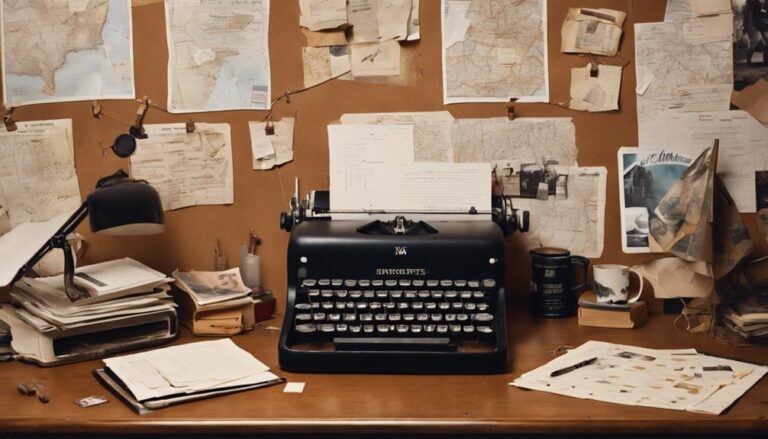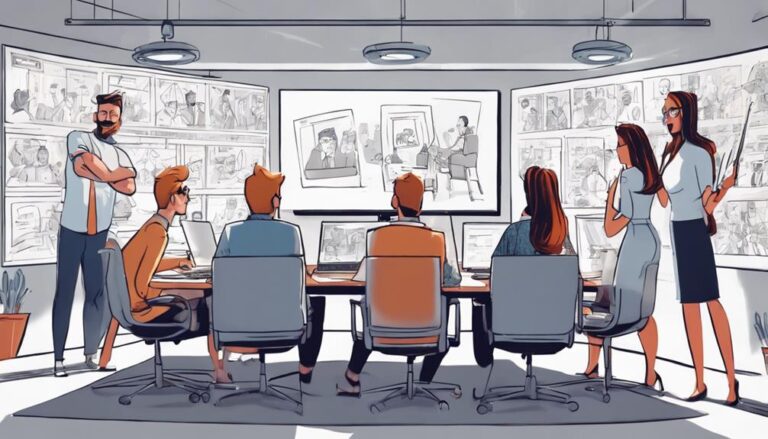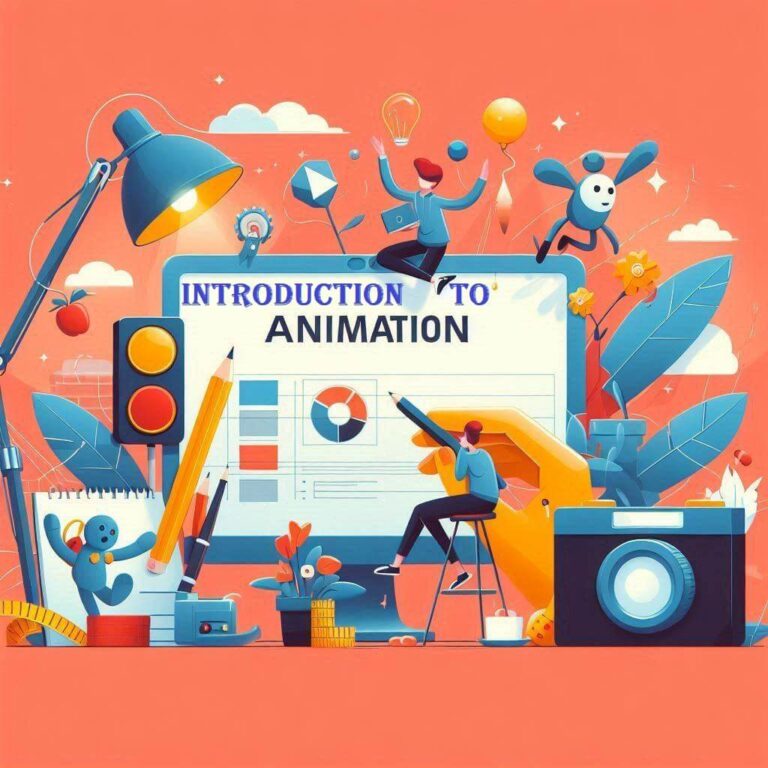Why Is European Animation Booming Right Now?
You're probably wondering what's behind the surge in European animation's popularity. It's not just a coincidence that studios across the continent are producing some of the most innovative and enthralling works in the industry. From Ireland's Cartoon Saloon to France's Les Armateurs, European studios are pushing the boundaries of storytelling, style, and technique. But what's driving this creative explosion? Is it the influx of government funding, the rise of indie studios, or something else entirely? As you explore the European animation landscape, you'll discover a complex web of factors that have come together to create a perfect storm of creativity.
Key Takeaways
- Government support and funding empower studios to push boundaries of storytelling and artistic expression, leading to higher-quality productions.
- Innovative storytelling and creativity thrive in Europe, with animators tackling mature themes and experimenting with non-linear narratives and blended genres.
- Cultural diversity drives originality, allowing for fresh perspectives and authentic voices in European animation, and celebrating cultural traditions and complex identities.
- The fusion of traditional techniques with modern technology opens up new possibilities for storytelling, resulting in visually striking and engaging productions.
- A strong festival circuit, training programs, and collaborations foster a sense of community and collaboration among European animators, driving the industry's growth.
Government Support Fuels Creativity
Across Europe, governments are actively providing financial incentives and resources to animation studios, empowering creatives to push the boundaries of storytelling and artistic expression.
As you explore the European animation landscape, you'll notice that tax incentives are a vital factor in this growth. Many countries offer attractive tax credits to animation studios, encouraging them to invest in innovative projects. France, for instance, offers a 30% tax rebate on production costs, while Ireland provides a 25% credit.
These incentives enable studios to allocate more resources to creative development, leading to higher-quality productions.
When it comes to funding priorities, governments are focusing on projects that showcase European culture, diversity, and creativity. This strategic approach guarantees that animation productions not only entertain but also promote European values and heritage.
By supporting local talent and innovative storytelling, governments are creating a fertile ground for the animation industry to thrive.
As you examine more closely into the world of European animation, you'll discover how government support is fueling creativity, driving innovation, and propelling the industry forward.
Innovative Storytelling Takes Center
As you explore into the world of European animation, you'll find that studios are now venturing into uncharted territories, crafting complex narratives that tackle mature themes and resonate with diverse audiences.
This shift towards innovative storytelling is a key factor contributing to the industry's boom.
By embracing moral complexity, European animators are creating characters that are multidimensional and relatable, allowing viewers to connect on a deeper level.
This approach has led to a surge in emotional resonance, as audiences are invested in the characters' journeys and struggles.
Studios are also experimenting with non-linear storytelling, blending genres, and pushing the boundaries of traditional animation techniques.
This innovative approach has resulted in a wide range of unique and mesmerizing stories that cater to diverse tastes and preferences.
The emphasis on emotional resonance has also led to a greater focus on character development, allowing audiences to form strong emotional bonds with the characters.
As a result, European animation is now more engaging, thought-provoking, and entertaining than ever before, appealing to a broad range of audiences and solidifying its position as a major player in the global animation industry.
Indie Scene Breaks Boundaries
As you explore the indie scene in European animation, you'll notice that experimental storytelling is thriving, pushing the boundaries of what's possible in the medium.
You're likely to come across unique visual styles that defy traditional norms, and this willingness to take risks is yielding some truly innovative results.
Experimental Storytelling Thrives
You're witnessing a revolution in European animation, where indie animators are pushing the boundaries of traditional narrative structures, embracing unconventional formats and techniques to craft unique, thought-provoking stories that captivate audiences.
They're not afraid to experiment, incorporating avant-garde approaches that challenge conventional storytelling.
This boundary-pushing mentality has led to a surge in innovative projects that defy genre classification and blur the lines between animation and other art forms.
As a result, you're seeing films and series that tackle complex themes, such as identity, social justice, and existential crises, in ways that are both abstract and relatable.
These experimental storytellers are unafraid to take risks, using non-linear narratives, abstract visuals, and unconventional sound design to create immersive experiences that linger long after the credits roll.
By rejecting traditional norms, they're creating a new language of animation that's both intellectually stimulating and emotionally resonant.
This fearless approach to storytelling is a key factor in the current European animation boom, attracting new audiences and redefining the medium's creative possibilities.
Unique Visual Styles
Throughout the European indie animation scene, filmmakers are inventing novel visual styles that shatter conventions, often blending traditional techniques with digital innovations to produce striking, dreamlike worlds that envelop viewers.
You'll notice that many of these films and shorts boast a stylized realism, where everyday settings are infused with a touch of fantasy. This approach allows creators to explore complex themes and emotions in a way that feels both grounded and imaginative.
In addition to stylized realism, you'll also find a strong emphasis on painterly aesthetics. Many filmmakers are drawing inspiration from fine art, incorporating bold brushstrokes and vivid color palettes into their work.
This results in a visually stunning experience that's akin to stepping into a living, breathing painting. As you explore the European indie animation scene, you'll discover a diverse range of visual styles, each one pushing the boundaries of what's possible in the medium.
From the whimsical to the surreal, these unique visual styles are a key factor in the region's current animation boom.
Cultural Diversity Drives Originality
Numerous European animators are tapping into their unique cultural backgrounds to craft distinctive stories that resonate with global audiences.
This cultural diversity drives originality, allowing you to experience fresh perspectives and authentic voices. For instance, you'll notice folkloric influences in many European animated films, where mythological creatures and ancient legends are reimagined for modern audiences.
This blending of traditional and modern elements results in a unique artistic expression that's both rooted in heritage and innovative in style.
As you explore European animation, you'll discover how cultural diversity enriches the storytelling. You'll find films that celebrate cultural traditions, challenge social norms, and explore complex identities.
This diversity of voices and experiences adds depth and richness to the animation landscape, making it more vibrant and engaging.
Traditional Techniques Evolve
You're witnessing a revival of traditional animation techniques, revamped and fused with modern technology to produce visually stunning and spellbinding storytelling.
Several traditional animation techniques, once considered old-fashioned, are being revamped and fused with modern technology to produce visually stunning and spellbinding storytelling.
This blend of old and new has given birth to digital hybrids, where classic techniques like hand-drawn animation are combined with computer-generated imagery (CGI).
The result is a unique aesthetic that's both nostalgic and cutting-edge.
Hand-drawn revivals are also on the rise, with many studios opting for traditional techniques to achieve a distinct look and feel.
You're seeing this in films and series that celebrate the beauty of hand-crafted animation, often with a modern twist.
The fusion of traditional techniques with modern technology has opened up new possibilities for storytelling, allowing animators to push boundaries and explore new styles.
As you explore the world of European animation, you'll notice that these innovative approaches are leading to a new wave of visually striking and engaging productions that are mesmerizing audiences worldwide.
European Festivals Gain Prominence
You're likely familiar with the prestige of European film festivals like Cannes and Berlinale, but did you know that sixteen European festivals now shine a spotlight on the continent's thriving animation industry, offering a platform for creators to showcase their work, network, and compete?
These festivals are crucibles for innovation, creativity, and talent, with many programmers actively seeking out fresh voices and perspectives.
Festival awards, such as the European Animation Awards and the Cartoon d'Or, provide a stamp of excellence, recognizing outstanding achievements in storytelling, design, and technique.
Programmer insights also offer valuable feedback, helping creators refine their craft and gain industry recognition.
By attending these festivals, you'll gain access to a vibrant community of animators, producers, and distributors, all sharing a passion for European animation.
Whether you're an industry insider or an enthusiast, these festivals are a must-attend for anyone looking to stay ahead of the curve in European animation.
Training and Education Improve
As you explore the factors contributing to the boom in European animation, you'll notice that training and education have become a significant area of focus. European animation schools and training programs are now better equipped to nurture the next generation of creatives, thanks to significant investments in cutting-edge technology, updated curricula, and partnerships with industry professionals.
These advancements have led to a more exhaustive education, with institutions now offering specialized courses in areas like visual effects, 3D animation, and storytelling. Additionally, curriculum updates have guaranteed that students are well-versed in the latest industry trends and tools. Virtual mentorship programs have also become increasingly popular, allowing students to learn from experienced professionals and gain valuable insights into the industry.
The results are evident, with many European animation schools producing talented graduates who are quickly making a name for themselves in the industry. As the quality of education continues to improve, it's likely that we'll see even more innovative and creative animation coming out of Europe in the years to come.
Collaborations and Co-Productions Thrive
As you explore the thriving European animation scene, you'll notice that collaborations and co-productions are playing a significant role in its growth.
By partnering with studios and creatives from other countries, you can tap into cross-border creative synergies, combining unique perspectives and expertise to produce innovative content.
This approach also allows you to share risks and rewards, making it a more sustainable and attractive option for many animators and studios.
Cross-Border Creative Synergies
European animation studios are increasingly forming cross-border partnerships, driving a surge in co-productions that bring together diverse creative talent and expertise.
As you explore the landscape, you'll notice that these collaborations are often centered around creative hubs, where studios, schools, and industry organizations converge to foster innovation and creativity.
These hubs create talent pipelines, connecting studios with a steady supply of skilled artists, writers, and directors.
Co-productions are particularly prevalent in regions with a strong animation heritage, such as France, the UK, and Ireland.
Studios are leveraging their unique strengths and expertise to develop projects that resonate with global audiences.
By combining resources and expertise, you're able to tap into new markets, share risks, and create content that's more diverse and engaging.
As a result, European animation is experiencing a creative renaissance, with studios pushing the boundaries of storytelling, style, and technique.
Shared Risk and Rewards
By pooling resources and expertise, animation studios can mitigate financial risks and tap into new markets, ultimately yielding a more diverse and engaging range of projects.
This shared approach allows you to spread the financial burden, reducing the risk of investing in a single project. Co-creation models, where studios collaborate on development, production, and distribution, are becoming increasingly popular.
This setup enables you to leverage each other's strengths, expertise, and networks, resulting in more innovative and high-quality content.
Financial transparency is key to successful collaborations. When all parties have a clear understanding of the project's budget, revenue streams, and profit shares, trust and confidence are built.
This transparency also facilitates more effective decision-making, ensuring that creative and financial goals are aligned.
As a result, you can focus on producing exceptional animation that resonates with global audiences.
Online Platforms Democratize Access
You can now bypass traditional gatekeepers and pitch your animation project directly to online platforms like YouTube, Vimeo, and Netflix, which have democratized access to global audiences and opened up new revenue streams for creators.
These platform pioneers have disrupted the industry, allowing you to connect with viewers worldwide without relying on global gatekeepers. This shift has leveled the playing field, providing opportunities for underrepresented voices and innovative storytelling.
With online platforms, you can showcase your work, build a fanbase, and generate revenue through ads, subscriptions, or merchandise sales.
You can also leverage platforms' analytics to refine your content, identifying what resonates with your audience and adjusting your strategy accordingly.
This direct-to-consumer approach enables you to retain creative control and ownership, ensuring that your unique vision reaches the masses without interference from intermediaries.
Niche Audiences Drive Demand
As online platforms provide unparalleled access to global audiences, creators are now catering to niche demographics that were previously underserved, driving demand for content that resonates with specific interests and identities.
You're no longer limited to broad, general audiences; instead, you can tap into micro niches that are passionate about specific themes, genres, or styles. This shift has led to a surge in European animation, as creators can now craft content that speaks directly to these underserved groups.
Fan engagement is a significant driver of this trend.
When you create content that resonates with a specific niche, fans become incredibly invested. They share, discuss, and advocate for the content, creating a snowball effect that drives demand even further.
This, in turn, incentivizes creators to produce more content that caters to these micro niches, fueling the boom in European animation. As a result, you're seeing a proliferation of unique, innovative, and diverse content that's mesmerizing audiences worldwide.
Frequently Asked Questions
What Percentage of European Animation Is Funded by Government Grants?
You'll find that around 20% of European animation is funded by government grants, with grant allocation prioritizing projects showcasing cultural diversity, innovation, and export potential, reflecting funding priorities that support local talent and global competitiveness.
How Do European Animators Balance Creative Freedom With Commercial Appeal?
You navigate the fine line between creative freedom and commercial appeal by staying true to your artistic vision while incorporating cultural identity elements that resonate with audiences, ensuring authenticity and broad appeal.
What Role Do Video Games Play in the European Animation Industry?
You notice that video games substantially impact European animation, as game crossovers inspire new audiences and artistic influences seep into series' visual styles, ultimately enriching the industry's creative landscape.
Can European Animation Compete With Disney and Pixar's Market Share?
You wonder if European animation can rival Disney and Pixar's market share. Analyzing market trends, it's clear that unique cultural identities and distinct storytelling styles can help European studios carve out their own niche and compete effectively.
Are There Any Notable European Animation Studios Outside of France?
You'll find notable European animation studios outside of France, such as Ireland's Storyboard, known for their work on Octonauts, and UK's Aardman, the masterminds behind Wallace and Gromit and Chicken Run.
Conclusion
European animation's current boom is the result of a perfect storm of factors.
From government support to cultural diversity, innovative storytelling, and cutting-edge tech, the region's studios are pushing boundaries like never before.
With collaborations, online platforms, and niche audiences driving demand, the industry's future looks bright.
As you look to the next big thing in animation, keep an eye on Europe – its creative explosion is only just getting started.







